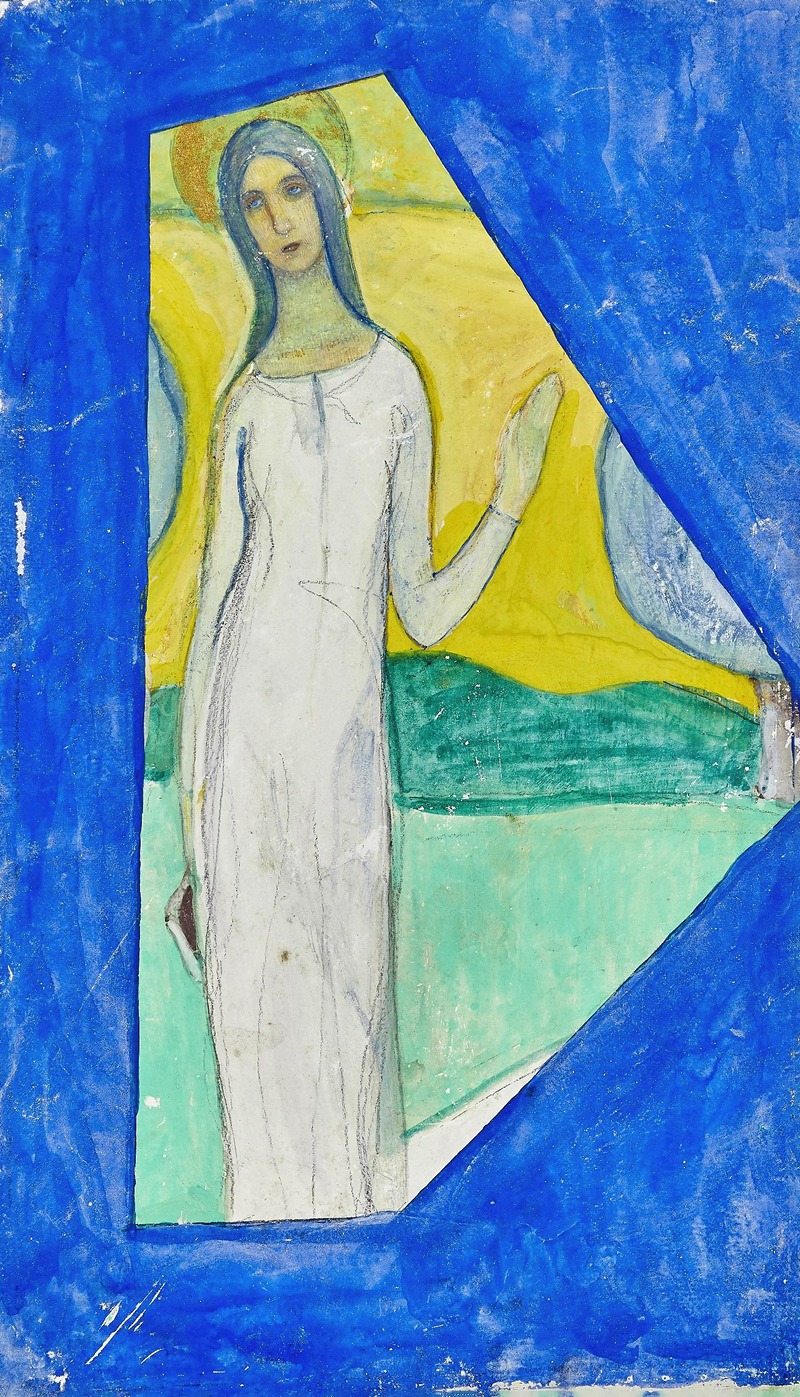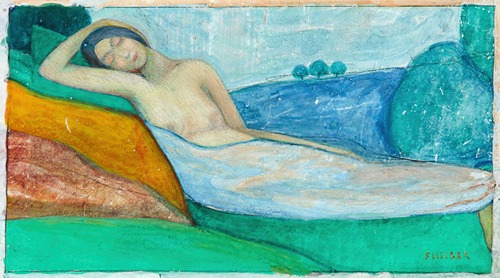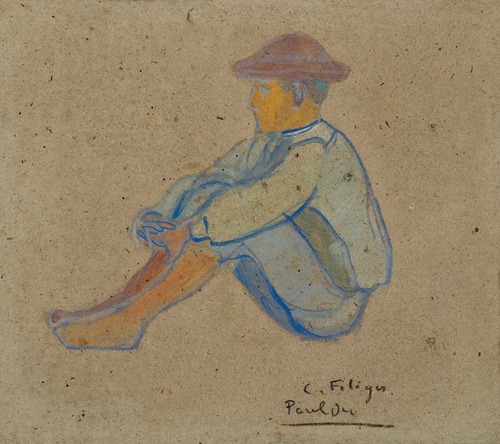
Charles Filiger was a French Symbolist painter. He was one of the artists who associated with Gauguin at Pont-Aven in Brittany.
The son of a wallpaper manufacturer in Mulhouse, Filiger first studied decorative arts before specializing in painting at the Académie Colarossi in Paris. He exhibited at the Salon des Indépendants in 1889 and 1890. He arrived in Pont-Aven in 1888 and went on to Le Pouldu staying at the Buvette de la Plage where Gauguin was also a guest. Other artists who joined the colony in the late 1880s and early 1890s included Paul Sérusier, Charles Laval, Meijer de Haan, Armand Séguin, Henry Moret and Émile Jourdan. From 1890, he received a monthly payment of 100 francs from the artists' patron Count Antoine de La Rochefoucauld who was thus able to select Filiger's best works for himself while the remainder were exhibited at Le Barc de Boutteville, Le Salon de la Rose + Croix and other Paris galleries.
After Gauguin's departure in 1895, the other artists soon dispersed. Filiger made frequent moves in the area. After La Rochefoucauld terminated his monthly allowance, he lived in poverty in Kersulé, a hamlet near le Pouldu. He became an alcoholic and drugged himself on ether. After a period in hospital in 1905, he spent four years in a little inn in Gouarec. Breaking his ties with friends and family, from 1911 he lived in Arzano. In 1914, his sister paid for his board at a hotel in Tregunc. When the owners moved to Plougastel the following year, he moved with them for the remainder of his life. He died an alcoholic in January 1928 after being hospitalized in Brest.



